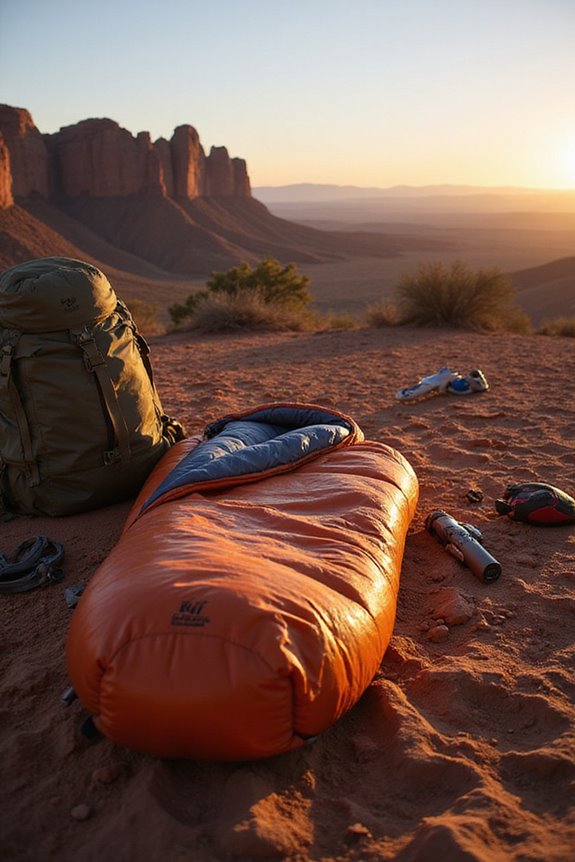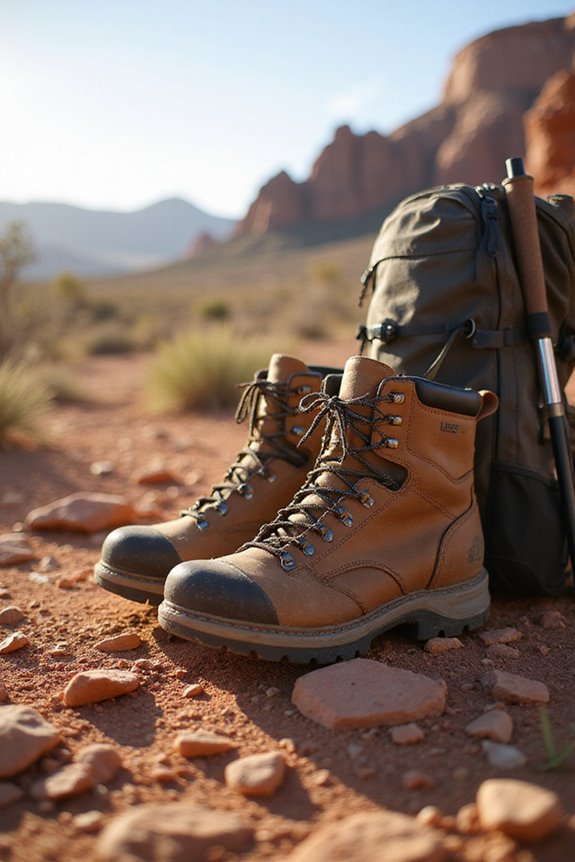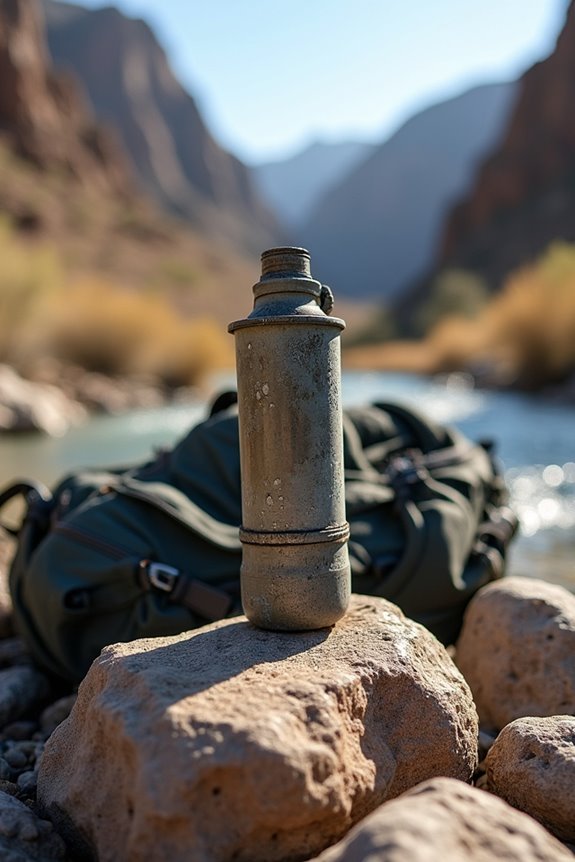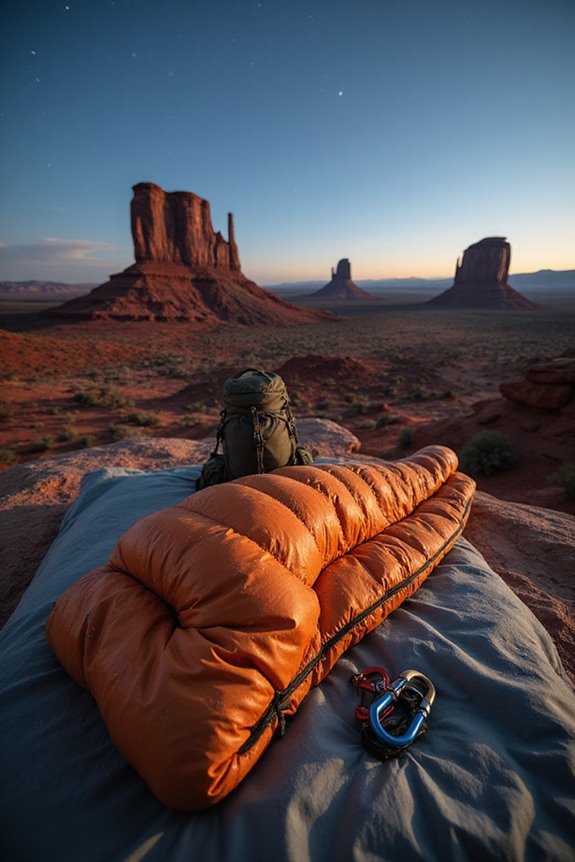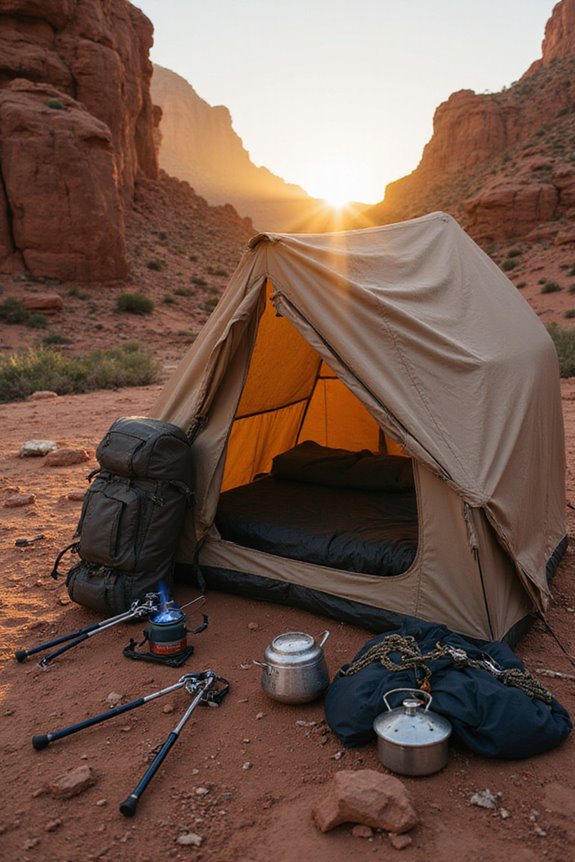When we pick a sleeping bag, let’s consider shape first! Rectangular bags give us space, while mummy bags hug us tight for warmth. Next, insulation is key—down is awesome for light packing, but synthetic works wonders when wet. Don’t forget temperature ratings; we want to stay cozy! Comfort matters too; a snug fit helps us retain heat. Finally, let’s keep weight in mind—lighter bags make for quicker hikes. Stick with us and we’ll uncover more tricks!
Key Takeaways
- Choose the right sleeping bag shape: rectangular for space, mummy for warmth, and double for couples.
- Select insulation based on conditions; down is lightweight but loses heat when wet, while synthetic is waterproof and hypoallergenic.
- Pay attention to temperature ratings: choose a bag’s comfort rating that suits your expected weather conditions.
- Ensure a good fit: align bag dimensions with your body shape for optimal comfort and warmth retention.
- Consider weight and portability; ultralight bags work well for backpacking while heavier bags are better suited for car camping.
Choosing the Right Sleeping Bag Shape
When it comes to choosing the right sleeping bag shape, have you ever wondered what’s going to make your camping experience truly unforgettable? We believe it starts with how you want to sleep!
Rectangular bags offer maximum roominess for stretching out, often doubling as cozy blankets. For those of us who enjoy a little wiggle room, semi-rectangular bags provide warmth with extra shoulder space.
Feeling adventurous? Mummy bags are perfect for backpacking, keeping us warm and light on our feet!
Planning a romantic getaway? Double sleeping bags are great for snuggling! And let’s not forget the kiddos—kids’ bags keep our little explorers comfy, too. Each shape has its perks; it’s all about finding the freedom to enjoy the great outdoors!
Some rectangular sleeping bags like the Coleman Heritage can comfortably fit individuals up to 6’7″ tall with their generous 40×84 inch dimensions while still providing warmth in temperatures as low as 10°F.
Understanding Insulation Materials

As we gear up for our next adventure, it’s time to talk about a key piece of gear that can make or break our outdoor experience: the sleeping bag insulation. When it comes to staying warm, we have two main options: down insulation and synthetic insulation.
Down insulation offers a superb warmth-to-weight ratio, making it a favorite for backpacking. It’s lightweight and compressible, but we need to be cautious in damp conditions since it loses heat when wet. On the flip side, synthetic insulation is quick-drying and hypoallergenic, perfect for those unpredictable downpours.
High-quality sleeping bags with 800 fill power goose down provide superior insulation performance in extreme conditions while maintaining lightweight properties.
At the end of the day, both have their perks, so let’s choose based on our trips ahead—just don’t forget to pack some good vibes!
Evaluating Temperature Ratings
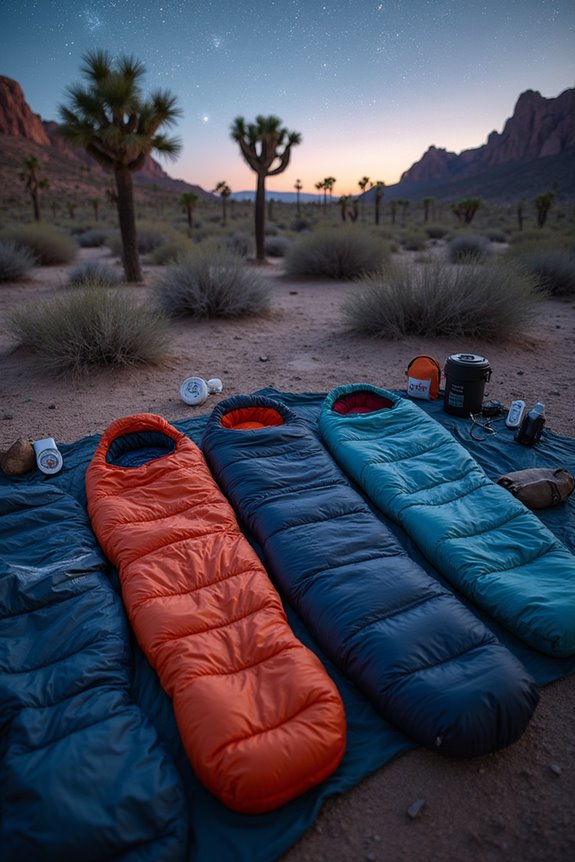
Evaluating temperature ratings can feel a bit like deciphering a mystery, but don’t worry—we’ve got your back! When we look at temperature rating guidelines, remember they’re just that: guidelines. The EN 13537 standard gives us a Comfort rating, perfect for cozying up in chilly weather, and a Lower Limit rating, which shows the cold tolerance for guys who think they’re invincible. We’ve learned that performance variability depends on many factors, like ground insulation and even how many layers we’re wearing. Quality sleeping bags typically offer temperature ratings range from 10F to 60F to accommodate different seasonal needs. So, when choosing a bag, opt for a Comfort rating that’s a bit below your expected temp; you’ll thank us later during those frosty nights! Stay warm, and happy trails to us all!
Ensuring Comfort and Fit
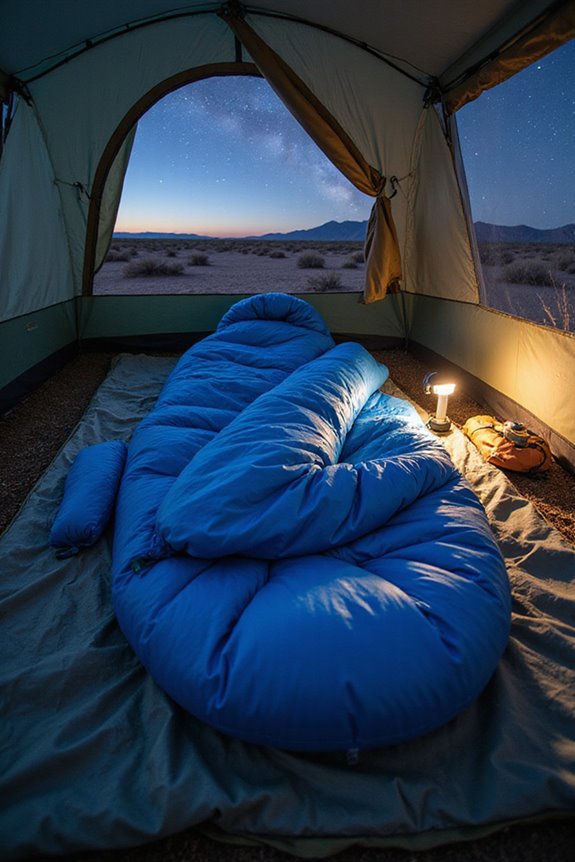
Finding the right sleeping bag isn’t just about those temperature ratings we talked about—it’s also about fit and comfort! We want warmth without feeling like a burrito. The sleeping bag dimensions are vital: they should align with our body shape compatibility. Opt for a snug mummy bag for warmth, or a rectangular bag if you value space—just remember, more air means less heat!
A tapered design can trap warmth better, while width at the shoulders and hips should match our body for comfort. And don’t forget those nifty adjustable hoods and draft collars to keep our heat in! Consider models like the Coleman Heritage Big & Tall which offers generous 84-inch length for taller campers up to 6ft 7in. Layering with a good sleeping pad and clothes that fit right can really elevate our outdoor nights—let’s check our fit before we hit the trail!
Considering Weight and Portability
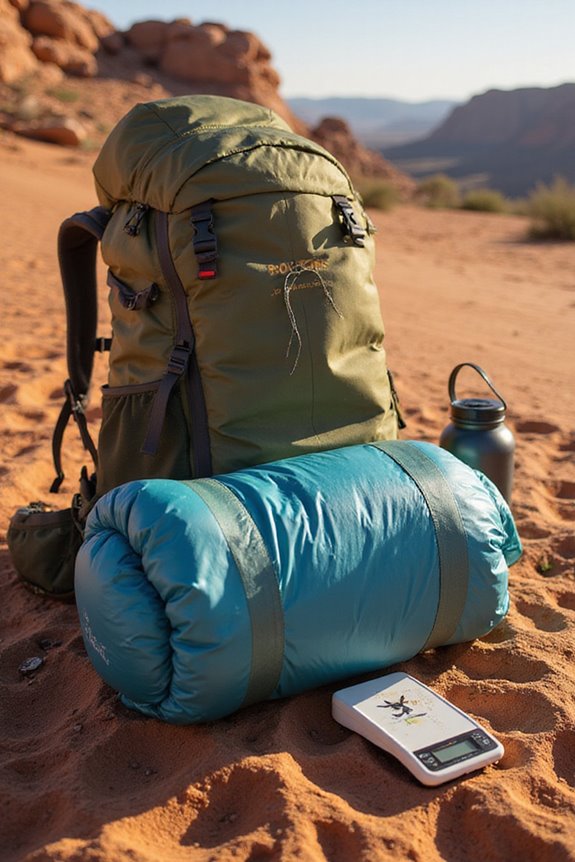
When we hit the trails, each ounce in our pack counts! That’s why considering weight and portability in our sleeping bags is essential. Opting for ultralight bags—under 2 pounds—gives us incredible weight savings, letting us carry more gear without feeling weighed down. Who wants to trudge up that hill with a heavy load? Not us!
Lightweight options balance warmth and packing efficiency, perfect for three-season use. Remember, a compact bag fits snugly in our packs, enhancing our hiking speed. While we adore the comfort of heavier bags for car camping, they can weigh us down when adventure calls. Look for sleeping bags weighing between 1.5 to 3.5 pounds for optimal portability during hiking adventures. So, let’s prioritize those lighter options and glide through nature! Who doesn’t want a carefree journey under the stars?
Maintenance and Care Tips
Taking care of our sleeping bags is just as important as selecting the right one for our adventures! We should stick to gentle cleaning techniques, like washing on a gentle cycle with minimal mild soap. Trust us, following those care labels pays off, especially for down bags. Spot cleaning’s a lifesaver for those dirty areas—just a soft brush and a bit of non-detergent soap!
When it’s time to pack it away, let’s embrace smart storage practices. No compression, please! Storing loosely or hanging keeps that precious loft intact. Plus, airing it out at camp can work wonders. With a few simple steps, we can keep our sleeping bags in prime condition for all our wild escapades. Adventure awaits!
Frequently Asked Questions
How Do I Clean and Wash My Sleeping Bag?
When cleaning our sleeping bags, we should remember the joys of adventure. We’ll choose gentle washing techniques appropriate for each sleeping bag material, ensuring our trusty gear stays fresh for future free-spirited journeys.
Can I Use a Sleeping Bag in a Hammock?
Absolutely, we can use a sleeping bag in a hammock! It’s essential we consider hammock insulation and guarantee compatibility. A snug fit will help maintain warmth, so let’s gear up for our next adventure!
What’S the Lifespan of a Typical Sleeping Bag?
When considering a sleeping bag’s lifespan, we find that insulation types matter. Down bags can last decades, while synthetic materials tend to wear out more quickly. Care influences longevity, so let’s prioritize quality and maintenance!
How Do I Store My Sleeping Bag When Not in Use?
When we store our sleeping bags, let’s avoid compression storage; it can harm insulation. Instead, we’ll choose a cool, dry spot, keeping temperature considerations in mind to keep our bags in ideal condition for future adventures.
Are There Sleeping Bags Suitable for Pets?
“Home is where the heart is.” For those adventurous spirits, there are excellent pet sleeping bags designed for travel. These specially crafted bags guarantee our furry companions enjoy comfort and warmth on our journeys together.

